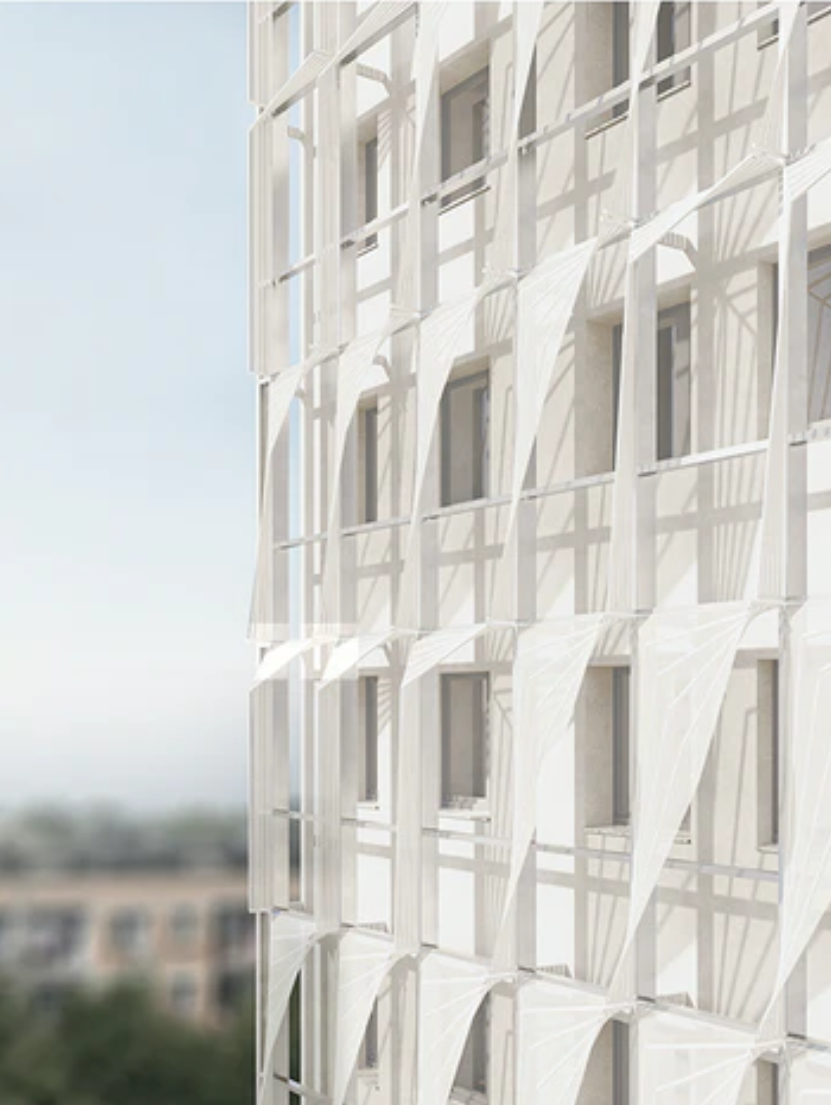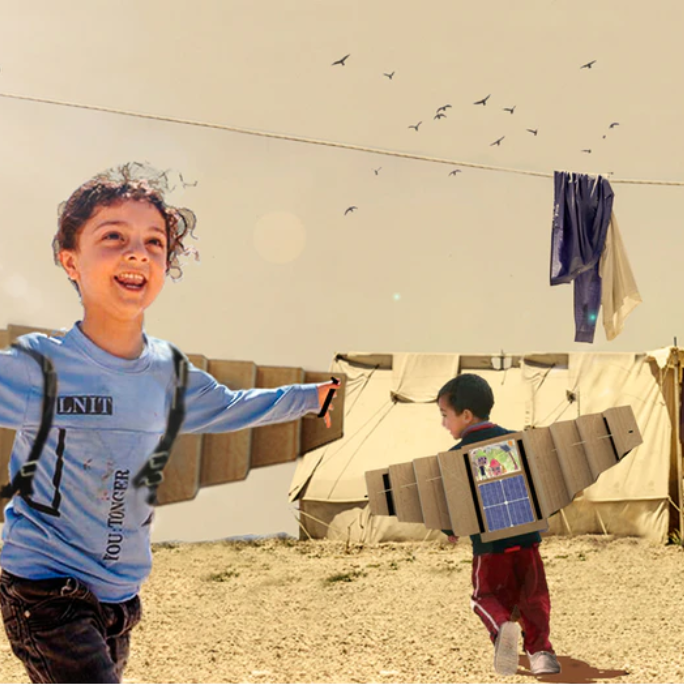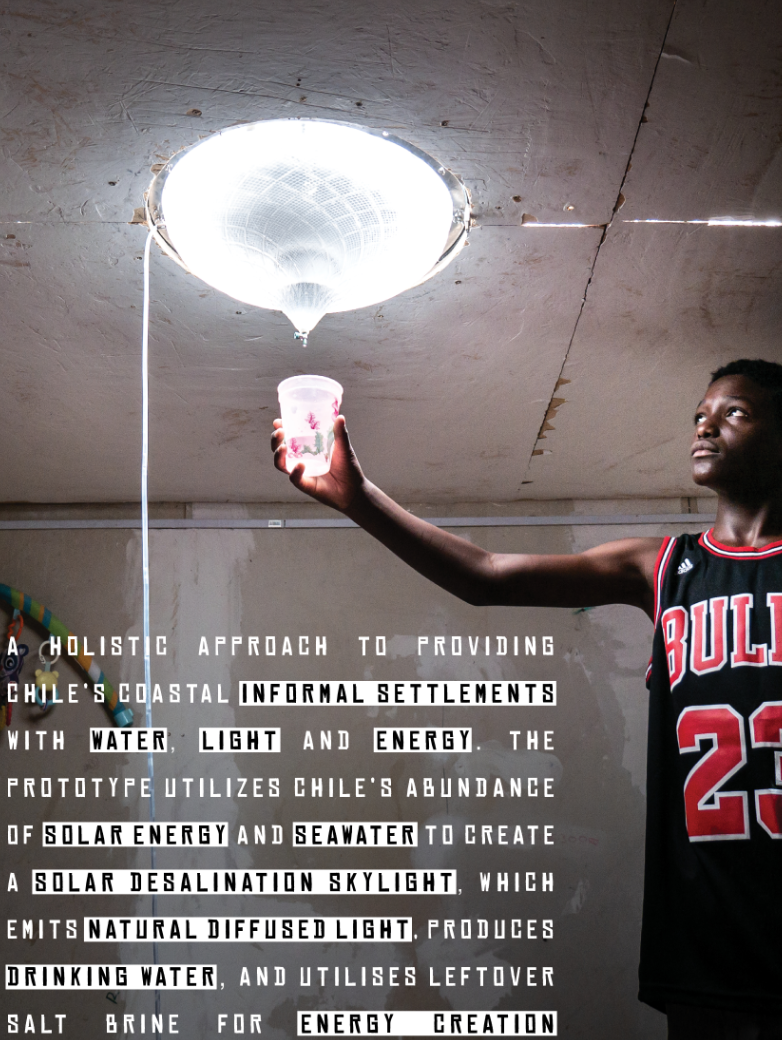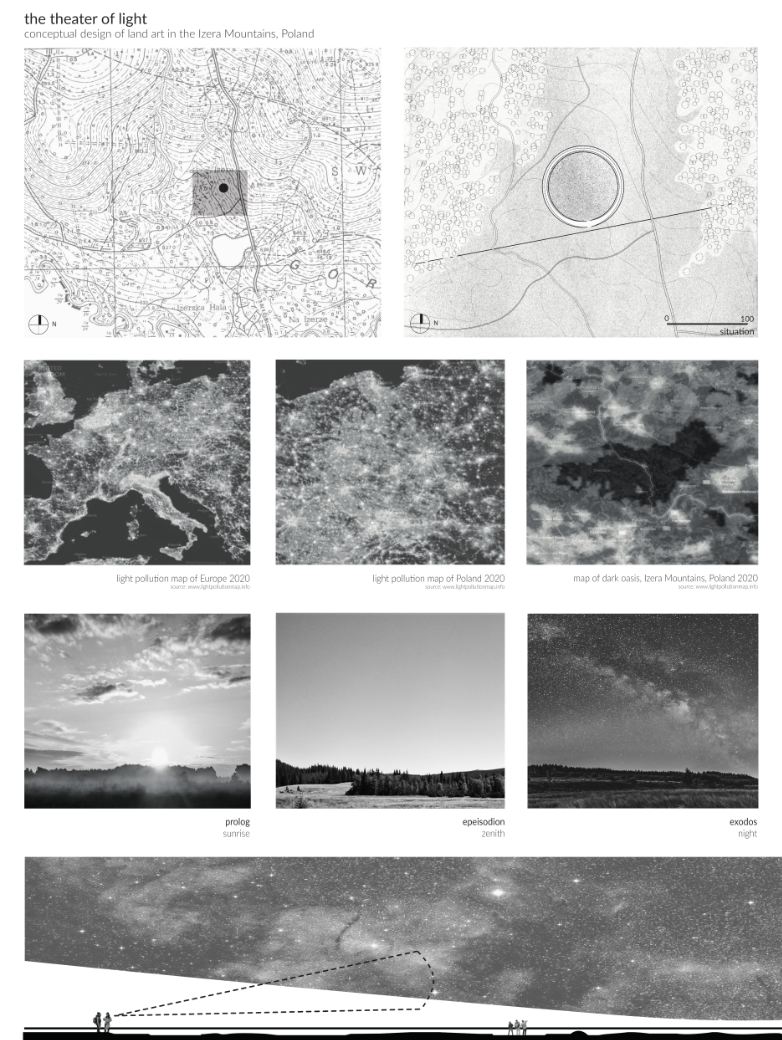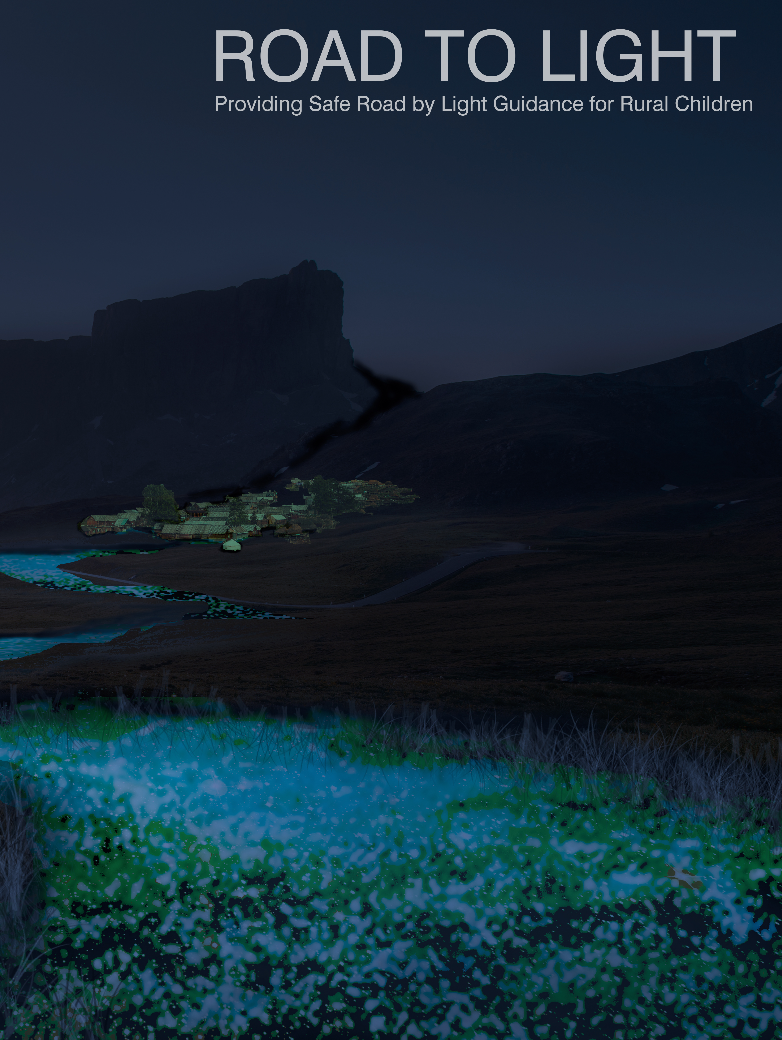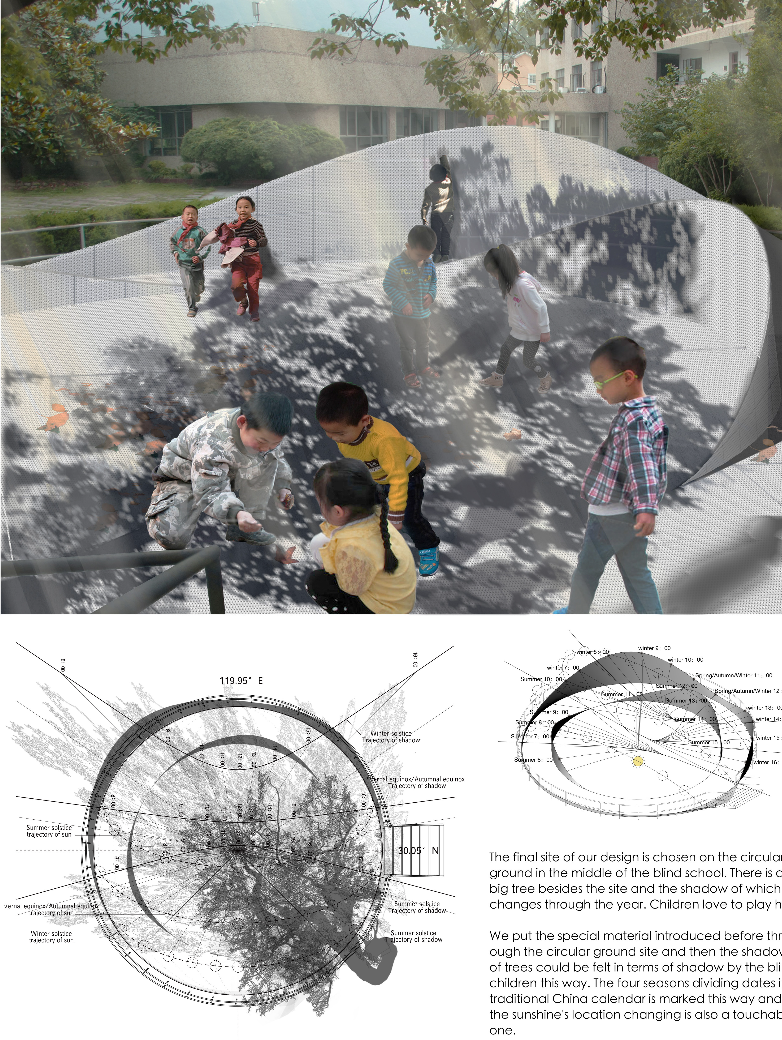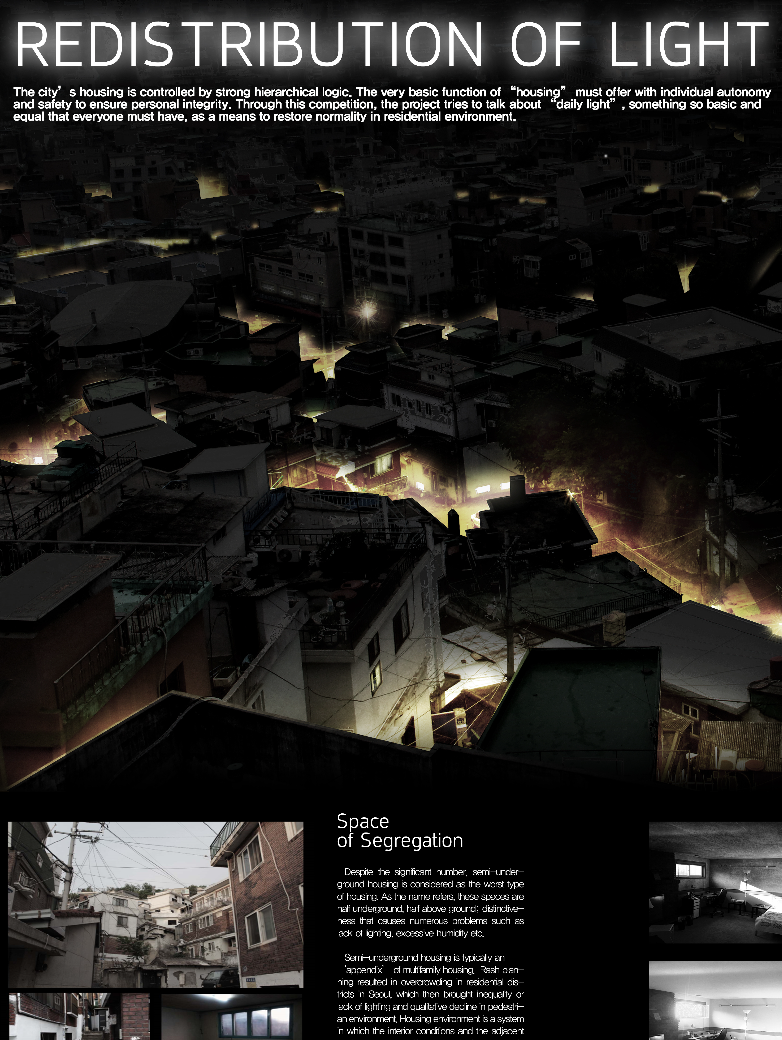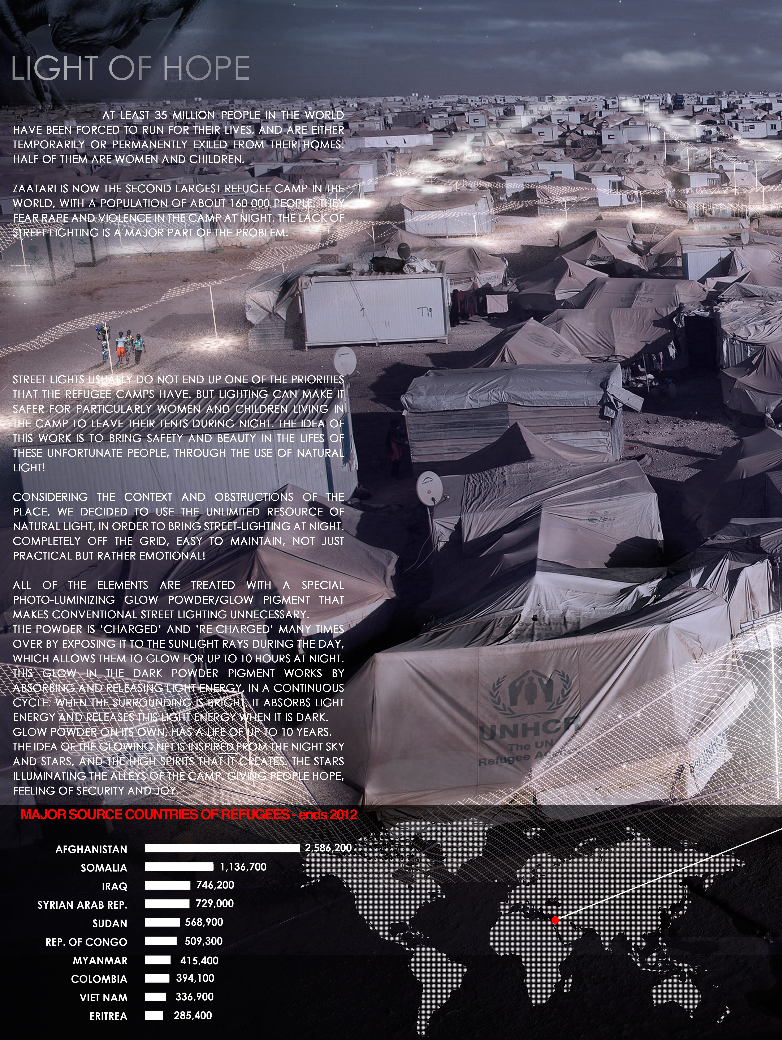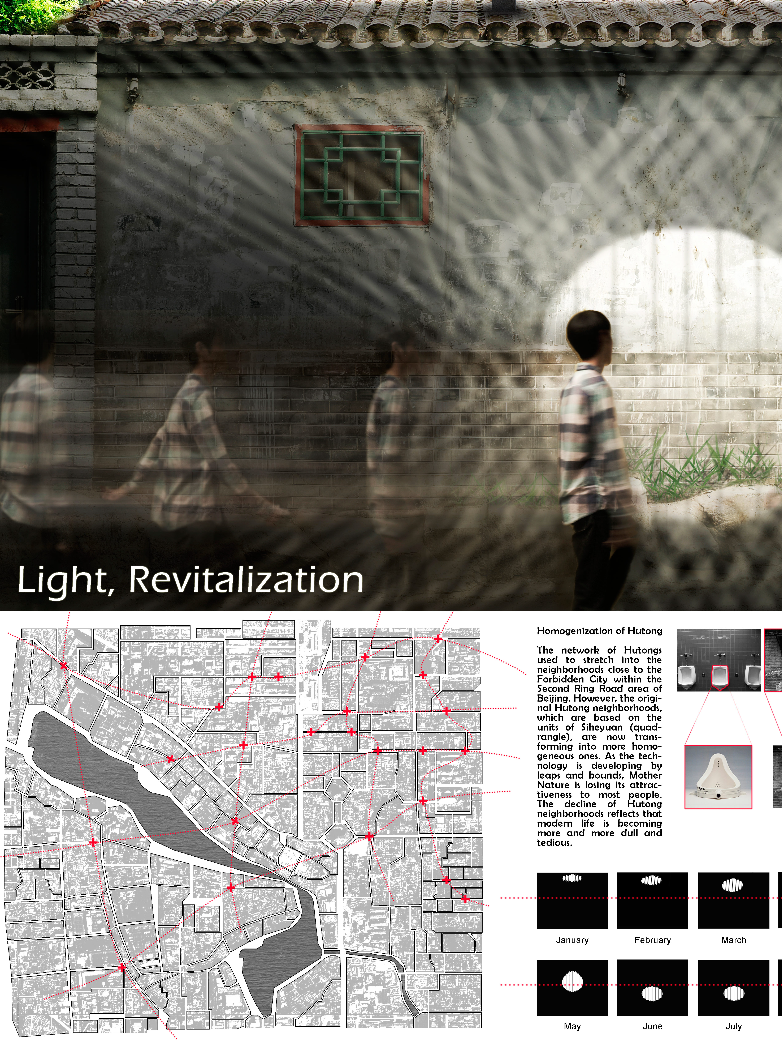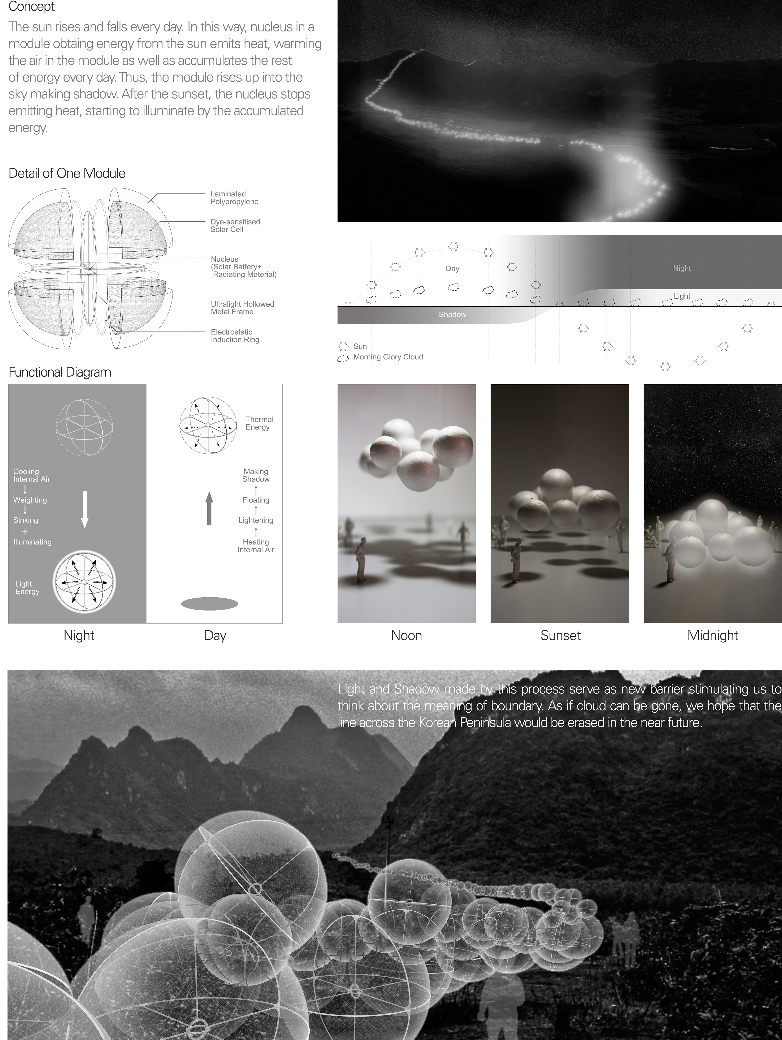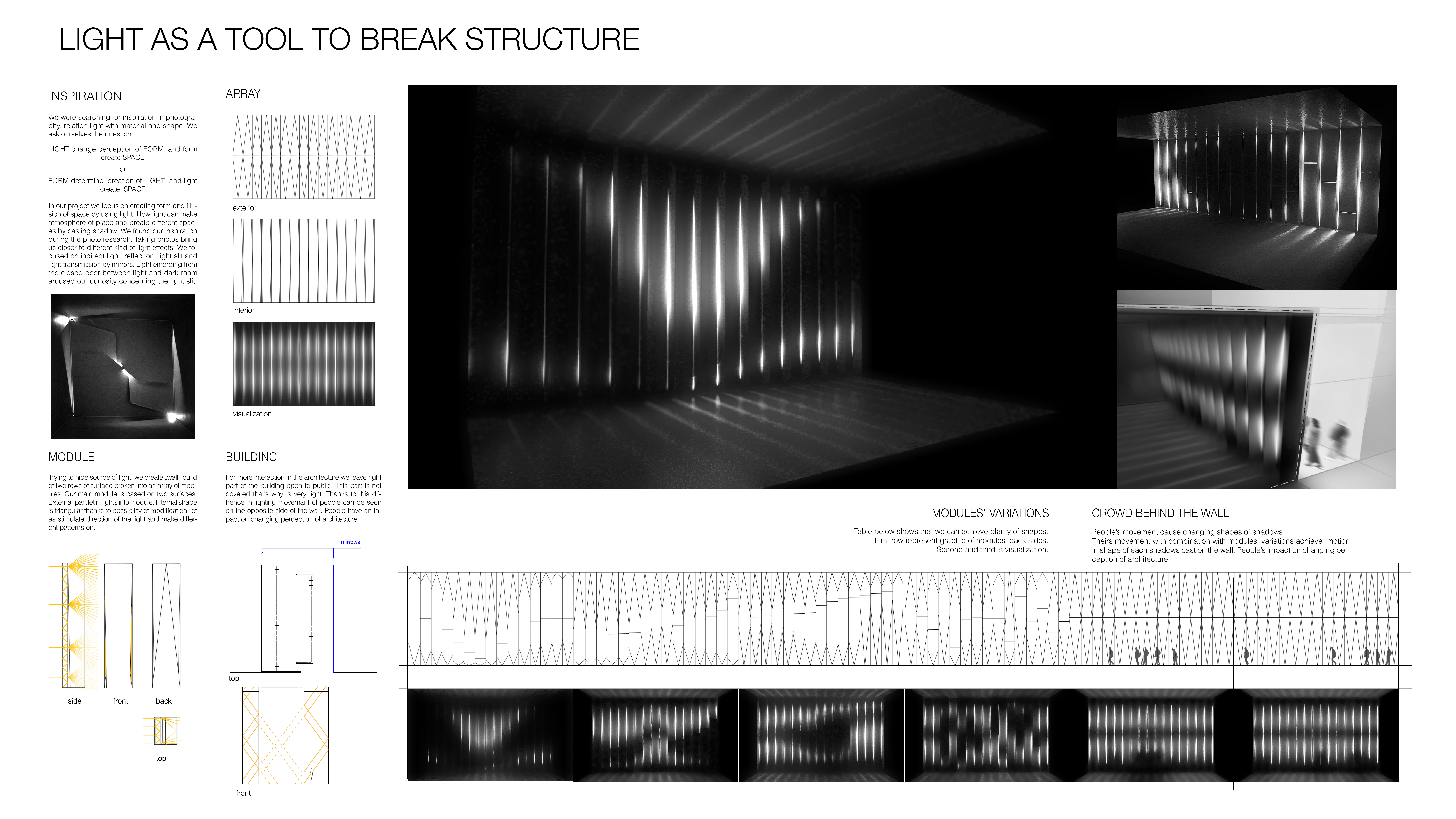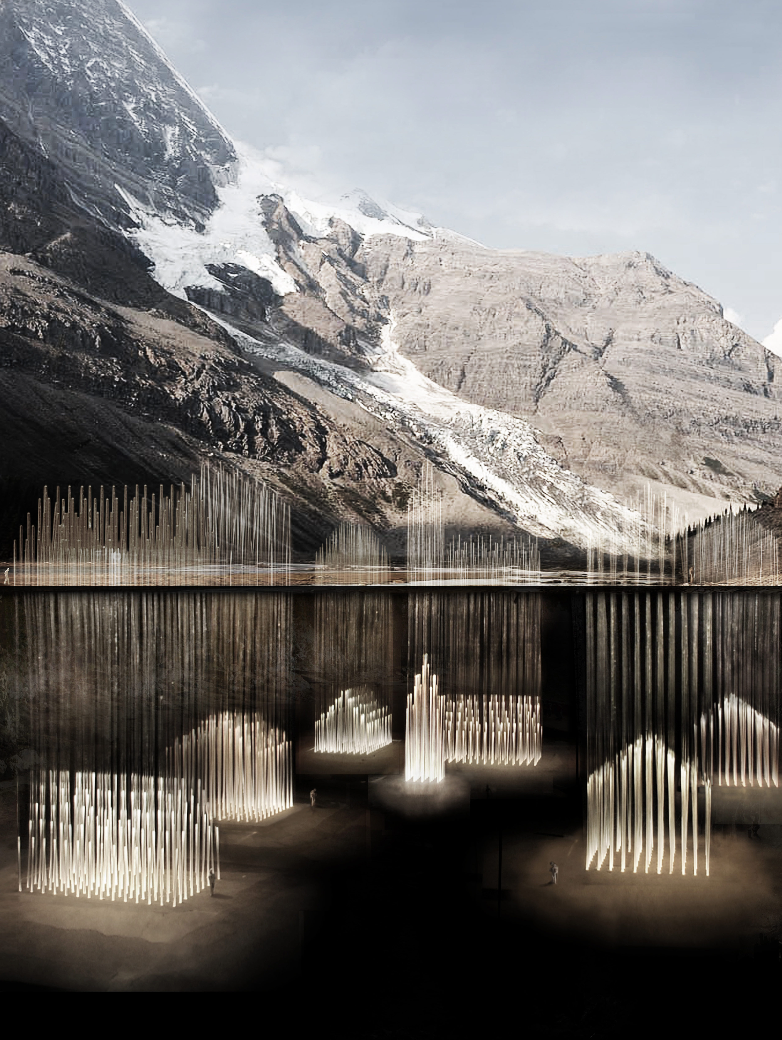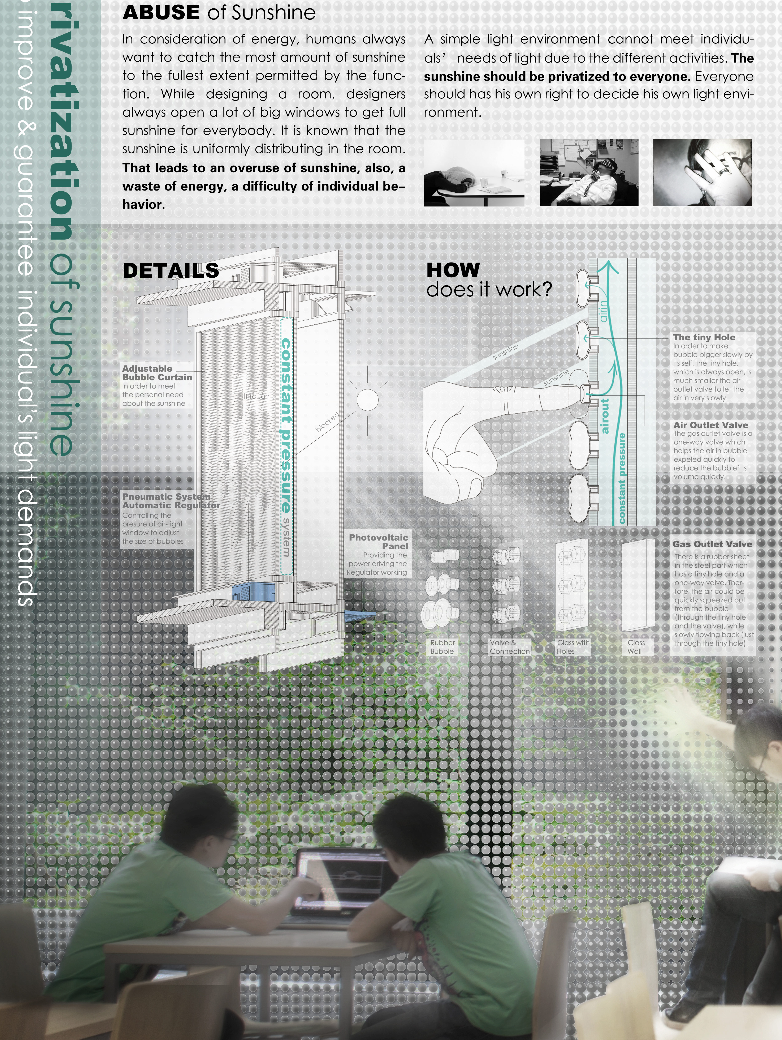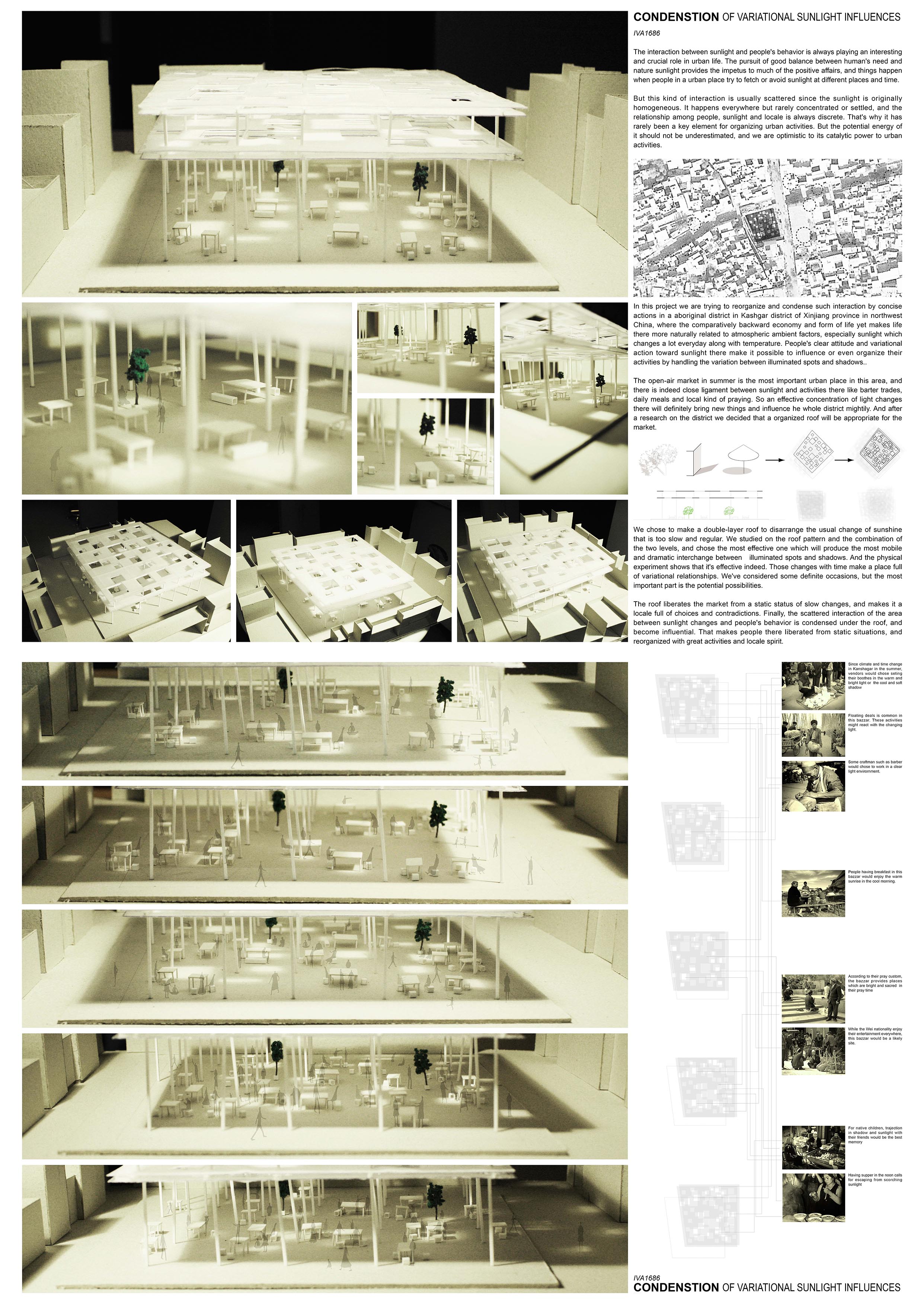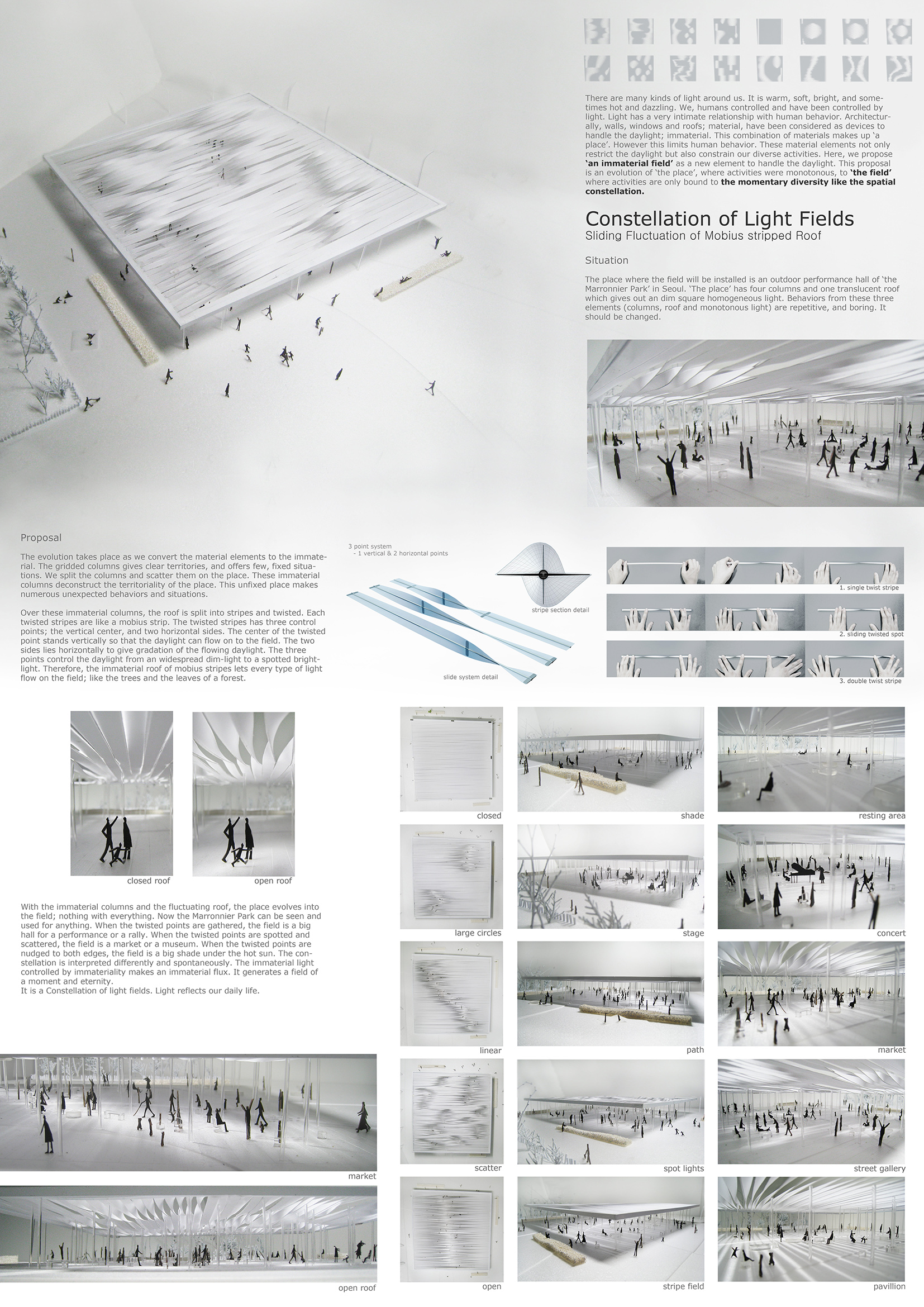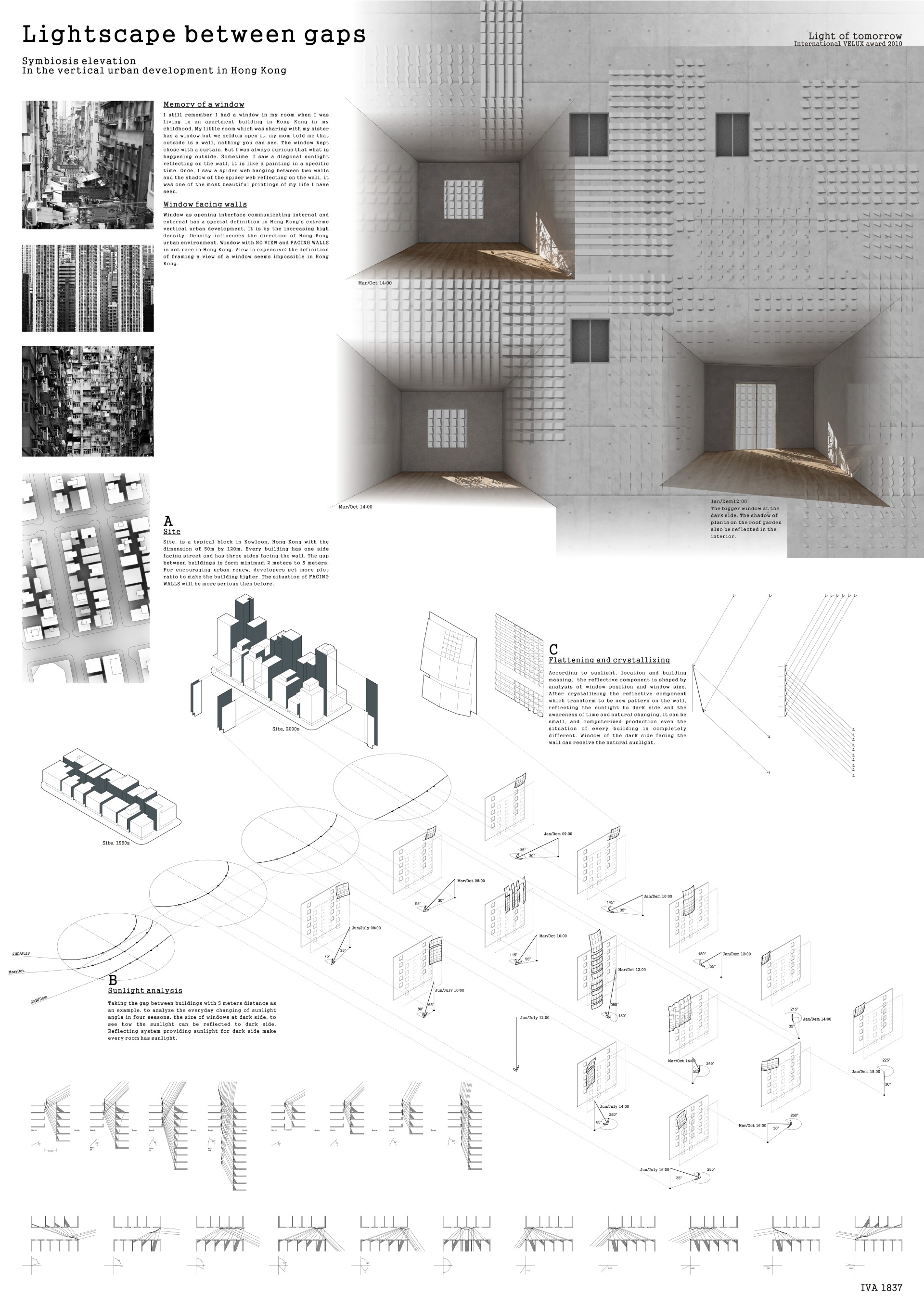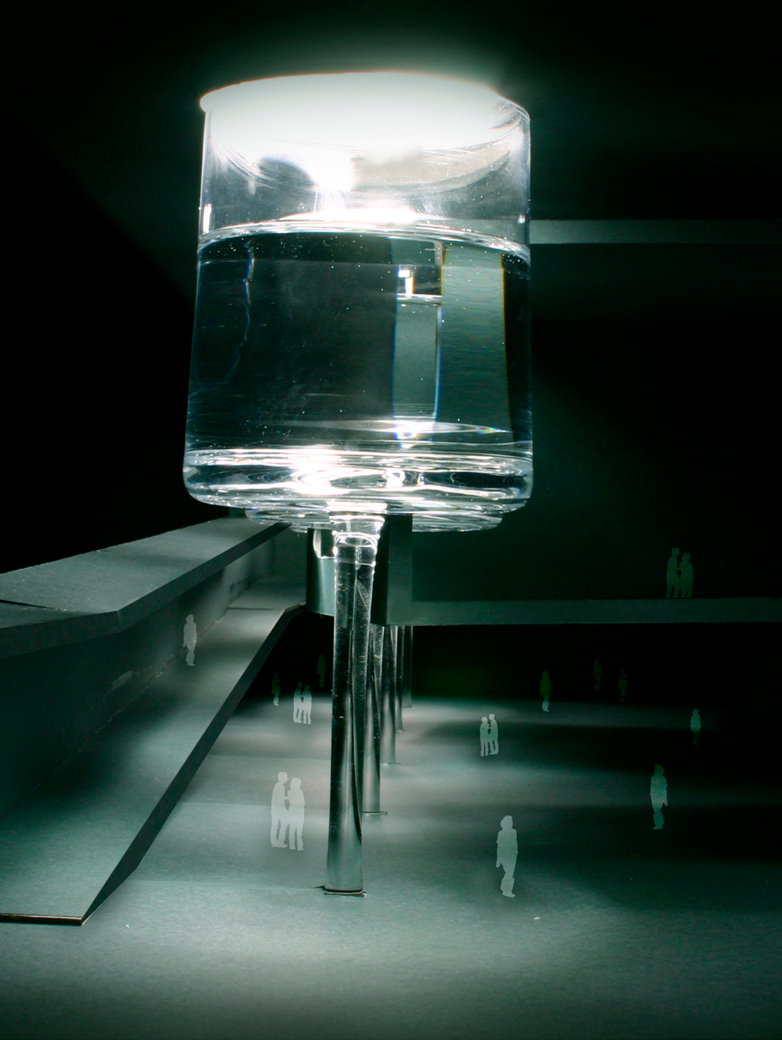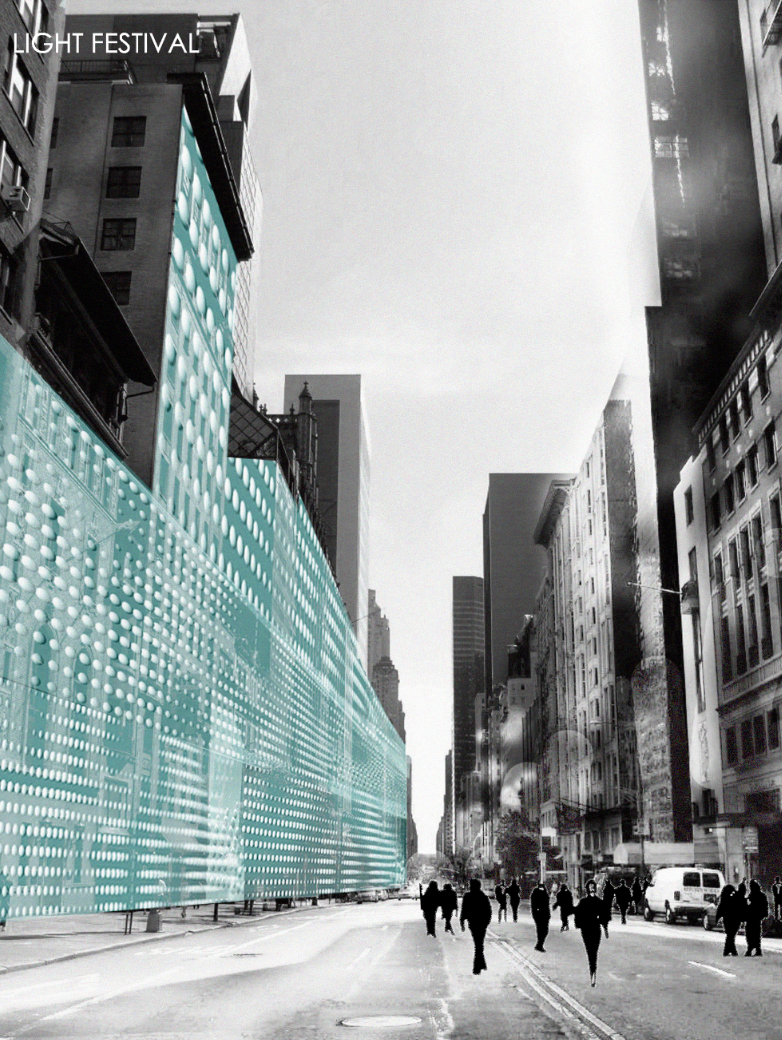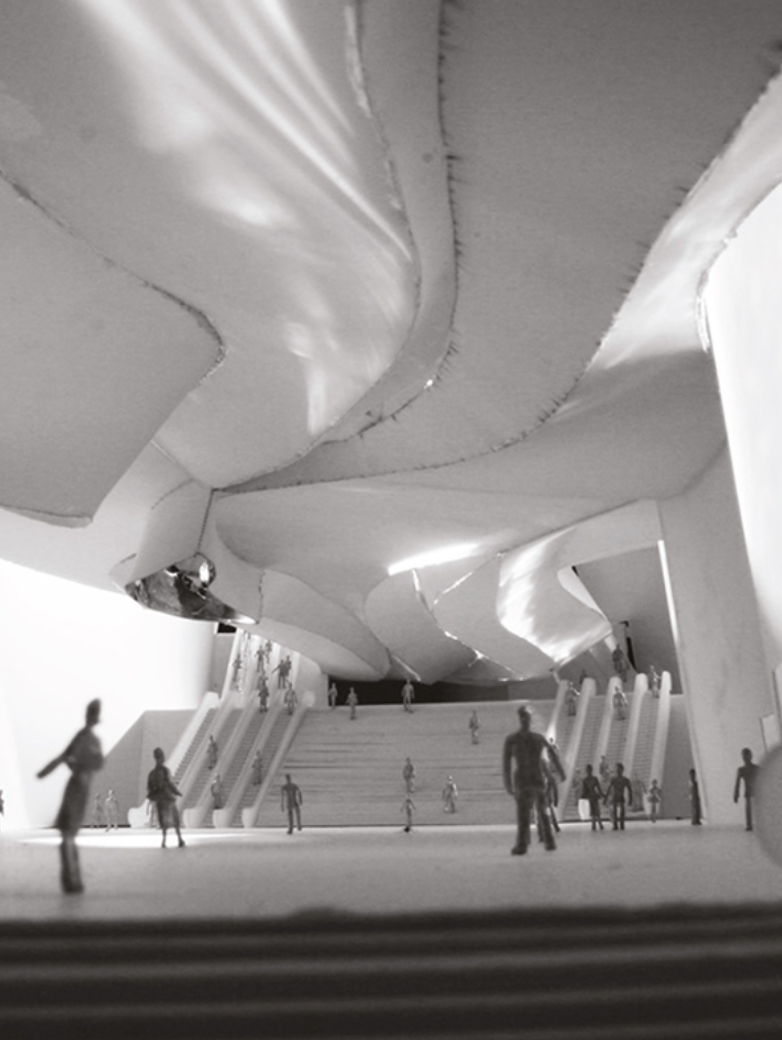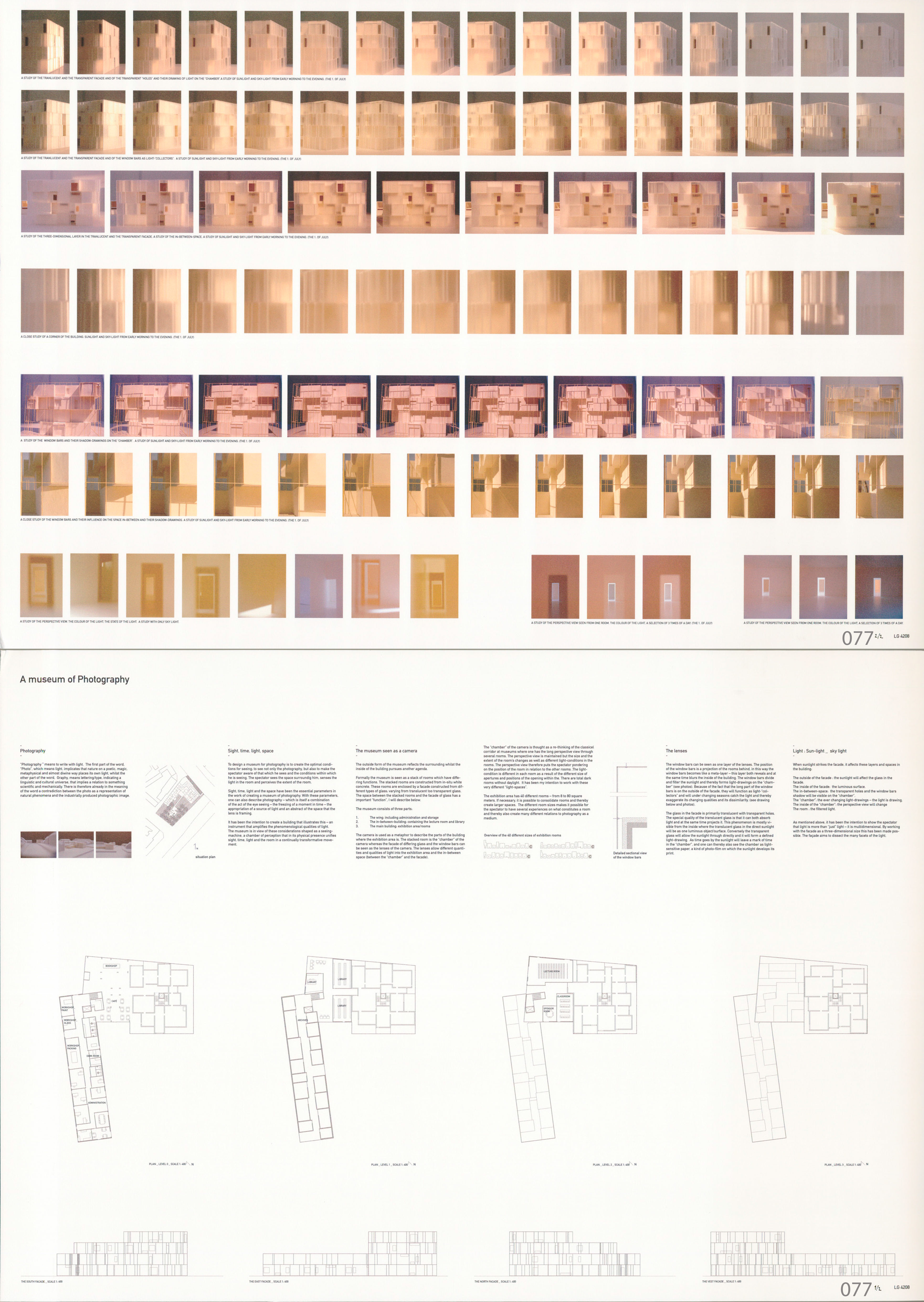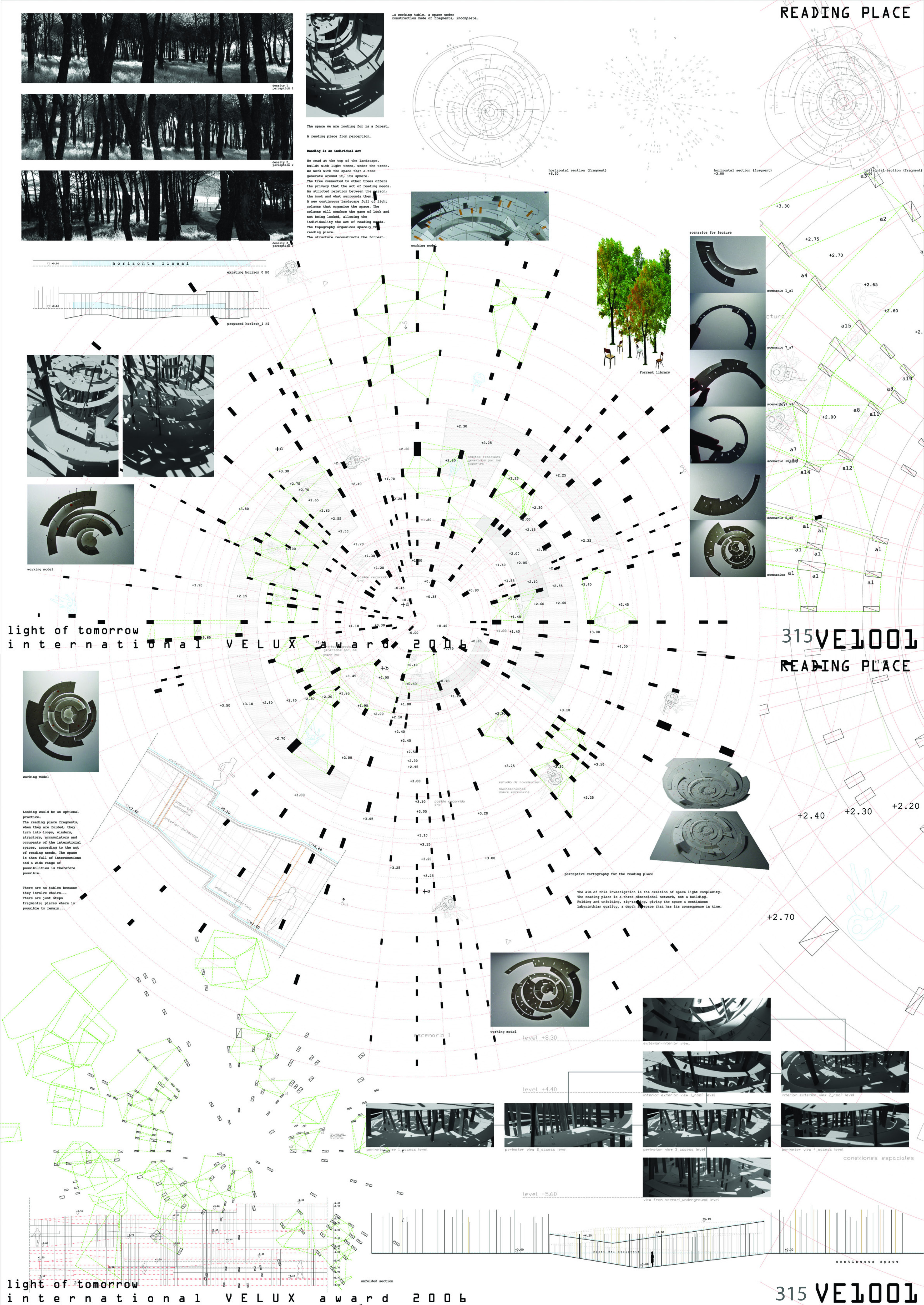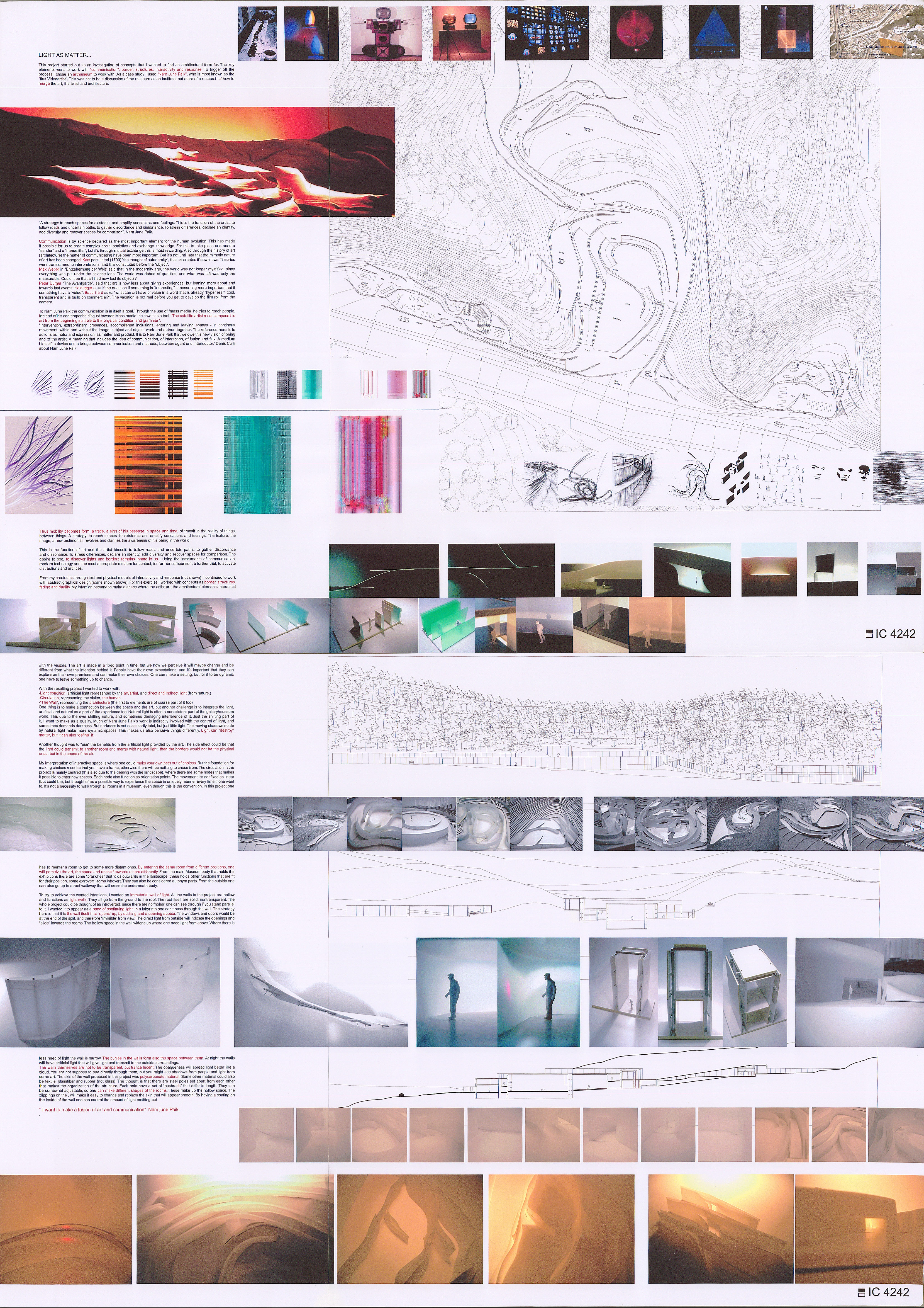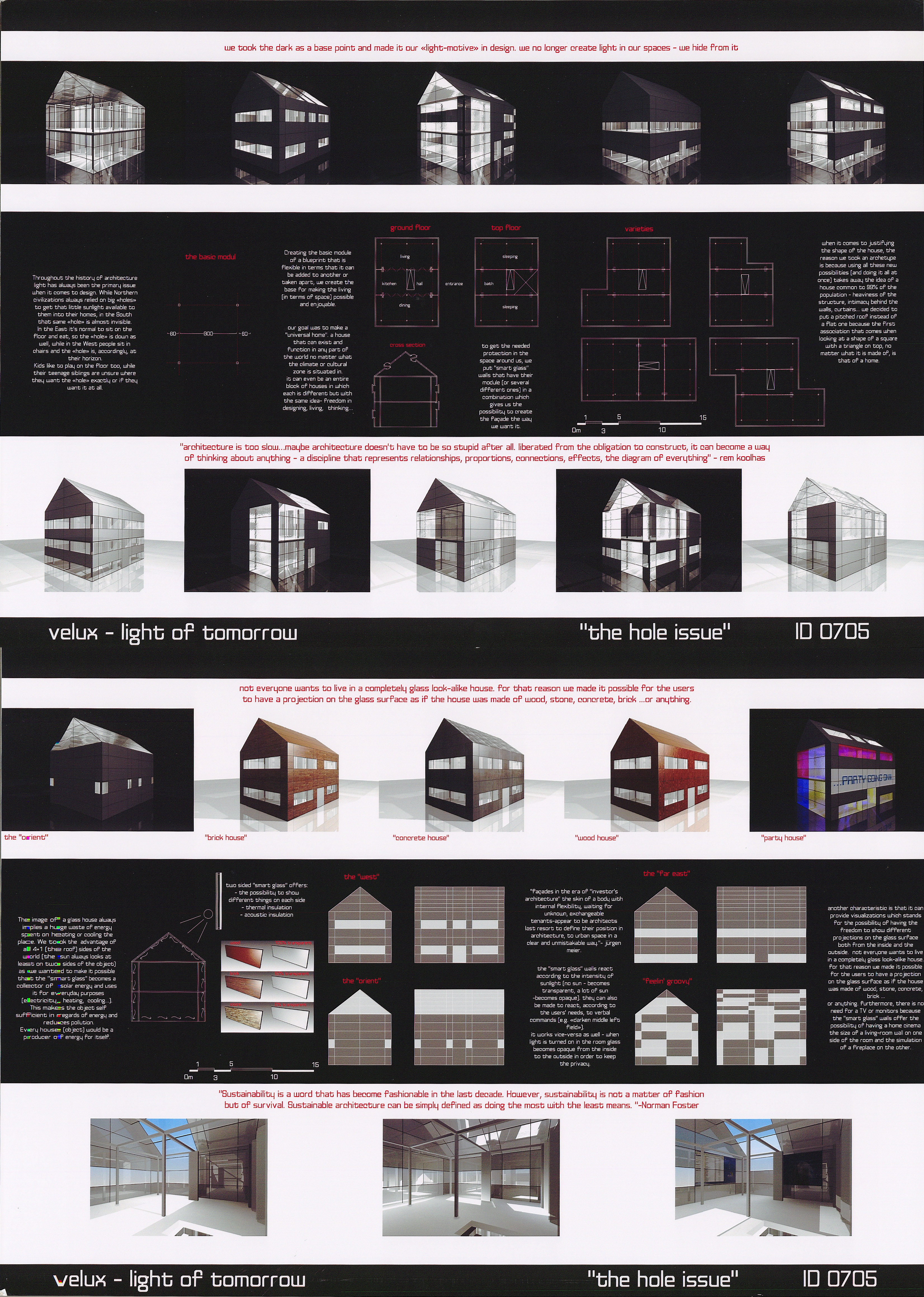2024 - The LightShelter
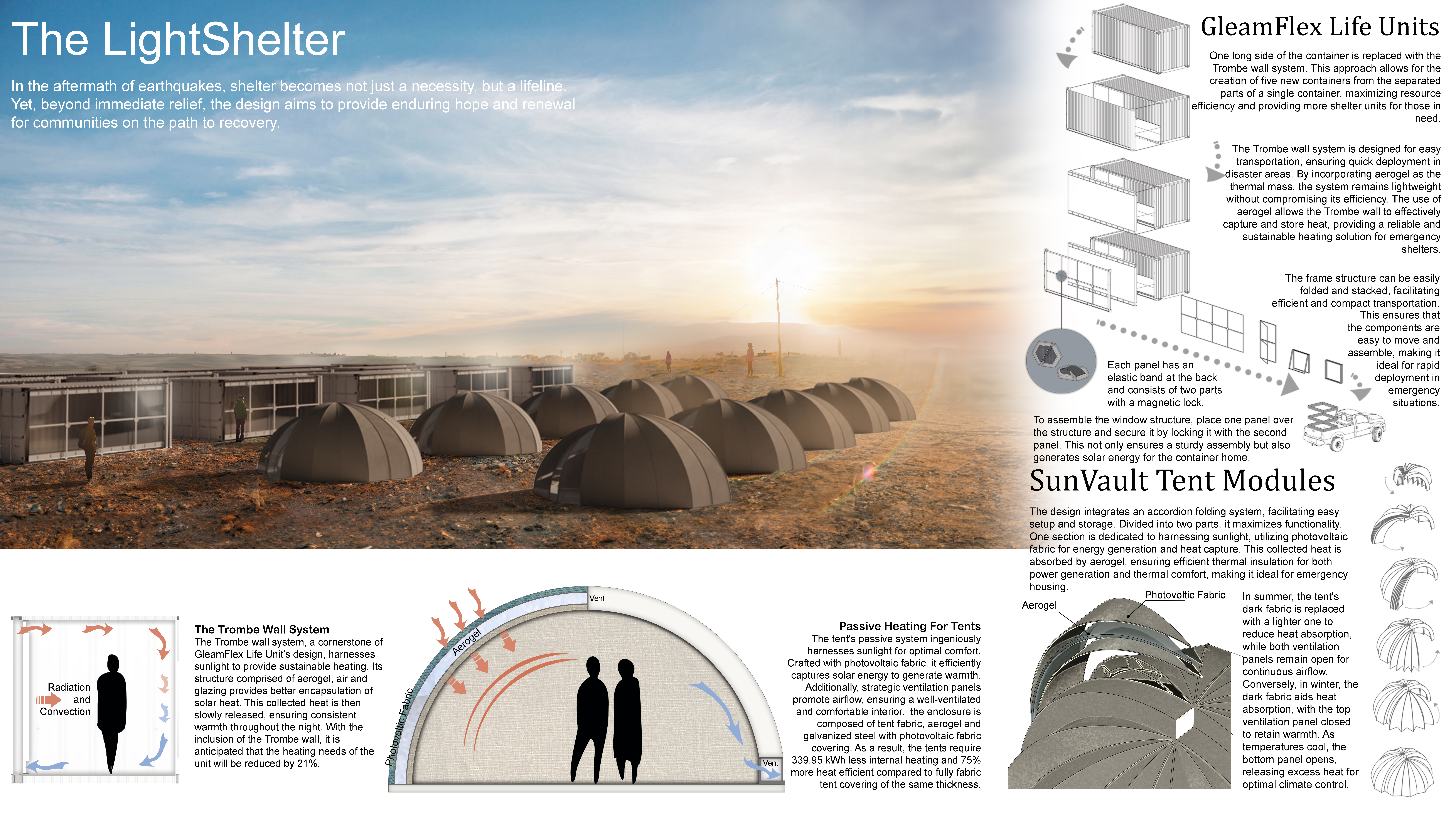
Category
Daylight Investigations - Region 2: Eastern Europe and the Middle East
Students
Işık Buse Pınarbaşı, Ayşe Uzun & Enes Özgül
Teacher
Hüseyin Onur Dinmez
School
İzmir University of Economics
Country
Turkey
Download
Download project board
The LightShelter Earthquakes are among the most devastating natural disasters, displacing millions of people and creating significant humanitarian challenges. Those who lose their homes in such catastrophes face the immediate need for temporary shelter, often resorting to tents and container homes that may be used for extended periods. These emergency accommodations, however, frequently fall short in providing adequate warmth and energy efficiency, leading to further physical and mental hardships for survivors. The LightShelter addresses these issues by harnessing the power of daylight to create innovative, sustainable housing solutions. We have developed a foldable trombe wall system for container homes and tents, leveraging natural light to provide passive heating and energy generation. This approach not only meets the immediate need for shelter but also ensures long-term usability and sustainability. In the case of container homes, we propose a significant modification: replacing one long side of a standard shipping container with our foldable Trombe wall system. Made from aerogel, a material known for its exceptional insulating properties, this system is both lightweight and highly efficient. The Trombe wall captures heat from the sun during the day, storing it and releasing it slowly to provide warmth, thus maintaining a comfortable indoor temperature even in cold conditions. Additionally, the system incorporates photovoltaic panels that serve as locks for the foldable wall, enabling the collection of solar energy to generate electricity. This innovation not only enhances thermal efficiency but also provides a sustainable source of energy, reducing reliance on external power sources. Our design includes the capability to transform a single container into five separate living units, maximizing the utility of available space—a crucial feature in post-disaster scenarios where resources are limited. The ease of transport and assembly of the foldable Trombe wall system ensures that these modified containers can be quickly deployed to disaster-stricken areas, providing immediate relief to those in need. For tent structures, we have developed a design that integrates advanced materials and passive solar principles to create an energy-efficient living space. The tent is constructed with three layers: an outer layer of photovoltaic fabric, a middle layer of aerogel, and an inner layer of standard fabric for insulation and comfort. The photovoltaic fabric captures solar energy, which heats the aerogel layer, providing warmth. This design is complemented by two ventilation panels, one at the bottom and one at the top, to regulate airflow and temperature. In winter, the top vent remains closed to retain heat, while the bottom vent allows cooler air to escape, ensuring that warm air circulates inside the tent. In summer, both vents are open, allowing hot air to escape from the top and cool air to flow in from the bottom, maintaining a comfortable indoor environment. The enclosure is composed of tent fabric, aerogel, and galvanized steel with a photovoltaic fabric covering. As a result, the tents require 339.95 kWh less internal heating and are 75% more heat efficient compared to fully fabric tent coverings of the same thickness. By utilizing solar energy for heating and electricity, we create a more sustainable housing solution that reduces the need for external power sources. The use of aerogel and photovoltaic technology ensures high energy efficiency. The lightweight and portable nature of both the foldable Trombe wall system and the tent design allows for rapid deployment in disaster areas, providing quick and effective relief. Furthermore, by ensuring adequate warmth and proper ventilation, our shelters improve the mental and physical well-being of displaced individuals, contributing to their overall health and recovery. In conclusion, the project reimagines the use of daylight in architecture, particularly in the context of emergency housing. By combining advanced materials and innovative design, we address the immediate and long-term needs of earthquake victims, providing sustainable, energy-efficient shelters. Aerogel, with its exceptional insulating properties, keeps our shelters lightweight while ensuring excellent thermal comfort. The photovoltaic fabric not only adds structural integrity but also generates electricity, enhancing the sustainability of the tents. Additionally, the foldable Trombe wall system is designed for easy transport and assembly, making it a highly practical solution for emergency housing. This approach not only meets basic human needs in the aftermath of disasters but also sets a new standard for future-ready, environmentally conscious architecture. By harnessing the power of daylight, we aim to bring light, warmth, and hope to those in dire need, ensuring a brighter and more sustainable tomorrow.
